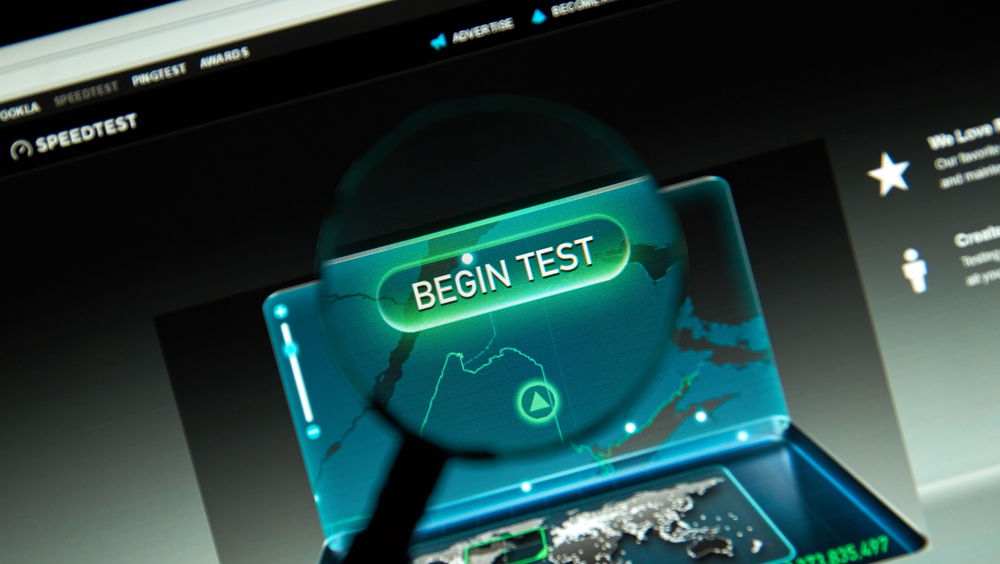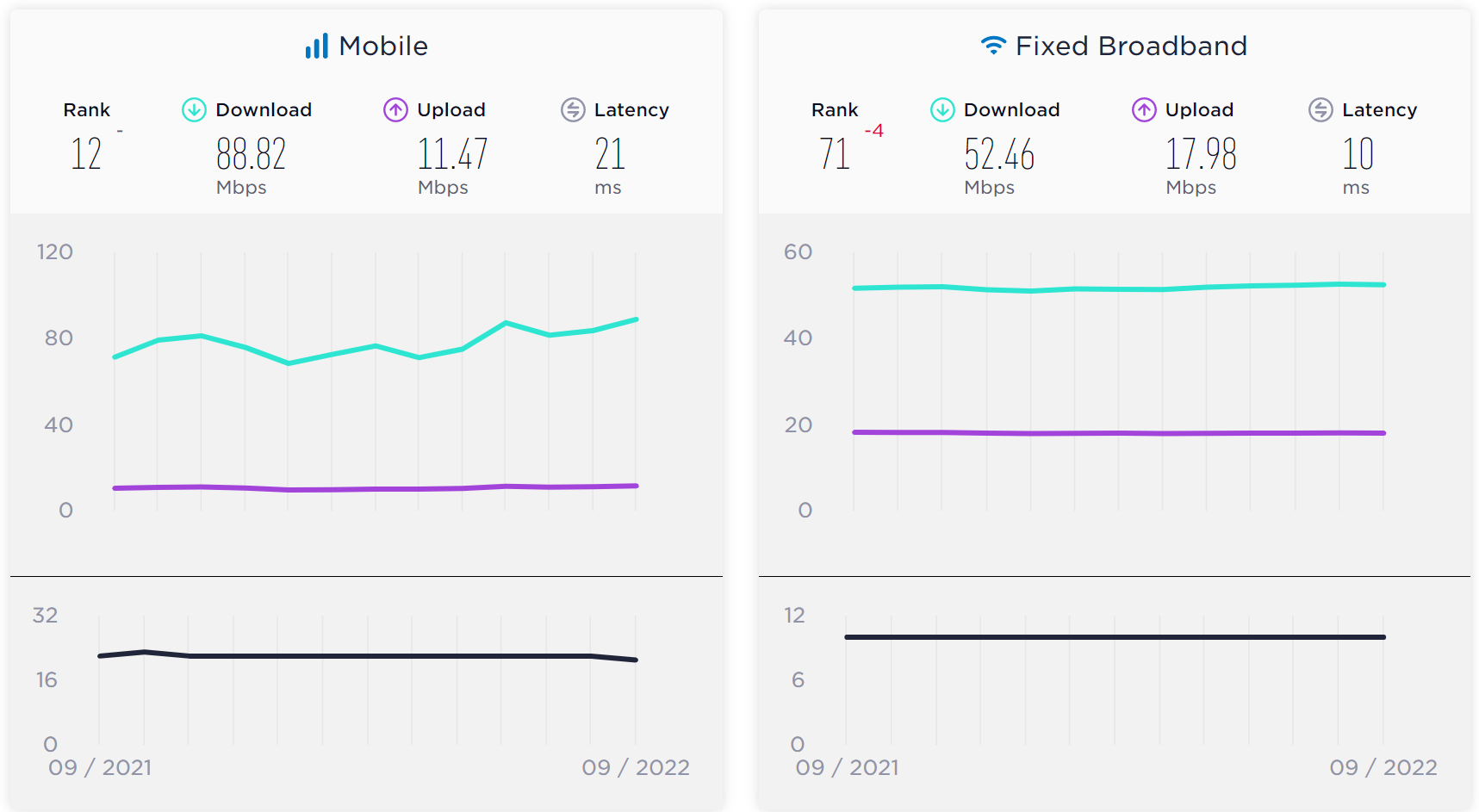It’s always interesting to look at Speedtest data sets knowing that there are so many factors involved. In the latest Global Index from Speedtest, we’re seeing some interesting data and trends continue.
Australia’s connection speeds across mobile and fixed broadband services continue to improve. Our median speed for mobile services has now reached 88.82Mbps and uploads 11.47Mbps. This continues the slow, but steady upward trend and keeps Australia in touch with the top 10, although a far cry from the 126.94Mbps Norway enjoys. It may not seem to be earth-shattering speeds, remember this is a median speed and not everyone has access to 5G services.
Our fixed broadband services tell a different story though. If you’re one who cares about ranks, we’re languishing in 71st position now delivering a median speed of 52.46Mbps downstream and 17.98Mbps up. In contrast, the world leaders (Chile and Singapore) in this have topped a median speak of 200Mbps downstream with China and Thailand not far behind at 195Mbps. Of course, this data shows the big picture without a lot of context; which is important.
The test shows actual delivery, not the capabilities of measured connections. Where some countries don’t have speed-tiered connections, Australia still has cost-based tiers. Many households don’t feel they need, or can’t afford higher-speed connections. Some houses want faster connections but are stuck on ageing HFC connections that simply can’t deliver what the house occupants want.
If you delve a little deeper into the stats, you’ll see that Aussie Broadband returns the highest average speed for Aussie users. This suggests that Aussie Broadband has a higher percentage of users who’ve paid for the higher tier of service, showing they’ve got a more discerning user base than some of the other providers whose users shop purely on price.
So while the data may look a bit down for Australian fixed services, it is trending in the right direction.
What are your connection speeds like at home? Are you limited by infrastructure?






I’m on Fixed Wireless, a 35 minute drive from the centre of Hobart. It’s generally not too bad, I worked from home for almost all of 2020 on it, doing IT support with multiple connections to servers and end users.
I would like faster, but it’s not going to happen unless I go Starlink or pay heaps for a mobile offering and both of those are too costly.
Many of us are stuck on NBN FTTN connections and want faster speeds but cannot get them, nor can we get the instrastructure upgraded to delivery FTTP. Lots of talk about that changing, but little change on the ground.
It’s not only FTTN that makes the NFN a You Fail for Ausfailure, all the other non-FTTP connection methods simply cannot deliver what is promised.
All of the hard wired methods are hamstrung and crippled by relying on the unfit for Real Broadband copper wire phone system, to connect the NFN to
victimsusers homes.The satellite system that is a backup for the bush, makes these crippled urban systems look fast.
I have fttp in Dapto NSW, still have the tv spinning the wheel of death when all the gamers get online. The big issue is the lack of bandwidth at the exchange, not the fttp
we will be so high in the ranking once nbn finish the FTTP upgrade to all australia
Telstra HFC, Nundah, QLD, to Comcast, San Francisco, California, USA
Download Mbps – 109.11
Upload Mbps – 19.20
Ping ms
Idle latency – 216
Download latency – 279
Upload latency – 291
Will post the Ookla test results link as a reply to this post
The Ookla results link for my test –
https://www.speedtest.net/result/13821933922